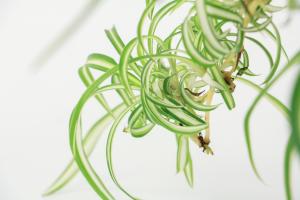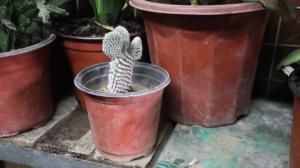Introduction
Florida is famous for its tropical climate and diverse plant species, making it a hospitable environment for growing a wide range of plants and fruit trees. One of the fruit trees that flourish in Florida is the fig tree, which is a delicious source of sweet and juicy fruits. In this article, we will guide you through the essential steps of planting a fig tree in Florida, so that you can enjoy a bountiful harvest of fresh, organic figs.
Choose the Right Variety of Fig Tree
Before you start planting a fig tree, you need to choose the right variety that is suitable for Florida's climate and soil conditions. The most common types of fig trees that grow well in Florida are Brown Turkey, Celeste, and LSU Purple. These cultivars are known for their adaptability to a wide range of soil types and their resistance to pests and diseases. Choose a reputable nursery or garden center that sells healthy, disease-free fig trees.
Site Selection and Preparation
The next step is to select the ideal location for planting your fig tree. Fig trees require a sunny and well-drained location, preferably with sandy, loamy soil. Avoid planting fig trees in areas with heavy clay soil or excessive moisture, as this can lead to root rot and fungal diseases. Additionally, make sure to choose a spot that is protected from strong winds and frost, which can damage the fig tree and reduce its fruit production.
Once you have selected the site, prepare the soil by removing any weeds or grass, and amend the soil with organic matter such as compost or well-aged manure. Add a balanced fertilizer to the soil, following the instructions on the package. You can also incorporate dolomite lime to adjust the pH level of the soil, which should be between 6.0 and 6.5 for optimal growth and fruit production.
Planting and Care
To plant the fig tree, dig a hole in the soil that is twice as wide as the root ball and slightly shallower. Remove the fig tree from its container and gently loosen the roots. Place the root ball in the center of the hole, and backfill the hole with soil, making sure to pack the soil firmly around the roots. Water the tree thoroughly and add a layer of organic mulch around the base of the tree, leaving a few inches of space between the mulch and the trunk to prevent moisture accumulation and fungal growth.
To care for your fig tree, water it regularly, especially during the hot and dry months. Figs need about 1 inch of water per week, either through rainfall or irrigation. Fertilize the tree once a year with a balanced fertilizer, preferably in late winter or early spring, before new growth appears. Prune the tree annually to remove dead or diseased wood, and to shape it for better fruit production. You can also thin out some of the figs to promote larger and sweeter fruits.
Pest and Disease Management
Despite their resistance to many common pests and diseases, fig trees can still be affected by certain pests and diseases in Florida. Some of the common problems that fig trees may encounter include fruit flies, nematodes, scale insects, and fungal diseases such as leaf spot and rust. To prevent these problems, practice good sanitation and hygiene around the tree, avoid overwatering or fertilizing, and inspect the tree regularly for any signs of infestation or disease. You can also use organic methods such as insecticidal soap or neem oil to control pests, and fungicides to treat fungal diseases.
Conclusion
Planting and growing a fig tree in Florida can be a rewarding and enjoyable experience, especially when you get to taste the sweet and succulent fruits that it produces. By following the steps outlined in this article, you can ensure that your fig tree thrives and produces abundant fruits year after year. Remember to choose the right variety, select an ideal location, prepare the soil, and provide proper care to your fig tree, and you will be rewarded with one of nature's finest gifts.

 how many times do yo...
how many times do yo... how many planted tre...
how many planted tre... how many pine trees ...
how many pine trees ... how many pecan trees...
how many pecan trees... how many plants comp...
how many plants comp... how many plants can ...
how many plants can ... how many plants and ...
how many plants and ... how many pepper plan...
how many pepper plan...































